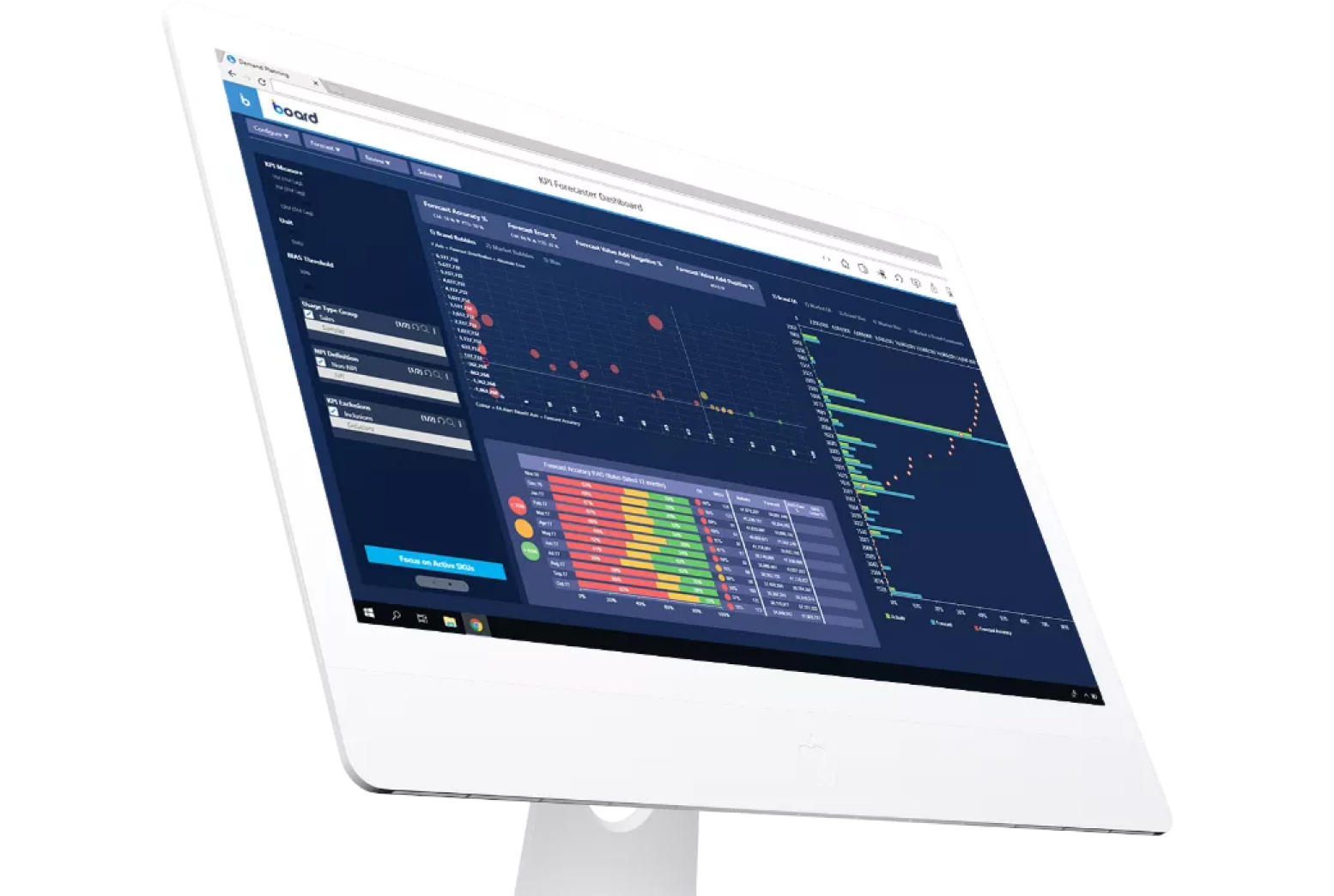Board 14 Release

Introducing Board 14 which involves enhanced user interface designed to improve your organisation’s Enterprise Performance Management (EPM) capabilities.
Click on the button below to watch a short video demonstrating the new Board 14 capabilities.
Board 14 main new features
Enhanced UI and Improves Features
The New Flex Grid Object
Dynamic Engine
Enhanced UI and Improved Features
- The New Layout Editor: The improved Layout Editor is more intuitive to navigate. It provides more advanced configuration settings, for example in the Quick Layout section, and better visualisation of settings available. The improvements were designed to make configuring a Layout faster and easier.
- Right-Click: Available in all global pages (Capsules, Data model, System, Procedure editor, etc.), makers can quickly access menu options and the toolbar.
- Screen Design: Makers and end users can quickly switch between Design and Play mode and can do so with a selection continuously applied rather than being reset. Enjoy faster development and easier debugging with the new screen design features.
- Masks: When editing a Mask, makers can now quickly assign it to multiple Screens simultaneously and directly in the screen they are working on.
- Quick Layout: Customise the end user controls in more detail when they interact with a Data View to guide them as to which data configurations they can display.
- Sliding and Properties Panels: The Layers section now allows the selection of multiple objects to rearrange them within the layer list as well as in the screen all together as before and to change their positions with the options of “bring to front” and “bring to back”. While the “Properties Search” feature allows the ability to easily find properties also in more complex objects.
- Back-End Updates: Key elements such as Cubes, Entities, Procedures, Data readers, and Drill through have all been improved to enhance usability with quicker developments, faster troubleshooting, and an easier navigable design.
- System Administration: Admins and Makers can assign roles, view folder security, and deliver Broadcasting more easily. The themes section has a new “Custom Links” are and an instant preview to visualise customisations.
The New Flex Grid Object
The new Flex Grid Object is a new way of interacting with Board data in a highly-performant, self-service manner. With dynamic capabilities, this powerful feature allows key benefits such as:
- Performance: The Flex Grid is a powerful tool with improved performance capabilities. End users and developers can leverage large data volumes with more Entities set by Row (1 million+) or by Column than ever before. Now, access and display of large amounts of data is faster and easier. The new object also optimizes how the data is retrieved, improving the user experience, responsiveness of the object, and performance in highly concurrent environments.
- Empowers End Users: With the new Flex Grid Object, the end user has many more capabilities than before. With advanced ad-hoc reporting, the end user can calculate data they need on the fly without restraint. With more self-service capabilities, the end user is free to pivot data without breaking the dataset logic. And when displaying data, the end user now has more control over how they view that data with improved display options like grouping data, sorting data, filtering data, collapsing axes, and more
- Self-Service Pivoting with Pivot Mode: Pivot functionalities allow makers to create more open reports and dashboards for end users so they can freely and independently achieve the type of analysis they need
- Improved Filtering and Sorting: Filtering and sorting is not configured in the Layout editor configuration as with a Data View, but within the Flex Grid itself. It is also possible to save a default display configuration of sorting and filtering within the Flex Grid so as not to start from the original dataset. Manual sorting of columns and Blocks are also possible
- Multi-Filtering & Multi-Sorting. It is possible to sort and filter by multiple Entities and Cubes. The maker can configure the restrictions to a single column or multiple
- Embedded Charts: Charts are possible directly within the Flex Grid itself. Use on-the-fly charts to visualize demand patterns and identify trends
- Export to Excel: You can export the exact Flex Grid configuration to an Excel workbook directly from the Object without formatting it
- More Flexible Formatting: The Flex Grid has even more formatting options than a Data View, found under the Design subpage of the Object Properties panel
- Unbalanced Hierarchies: The dataset-level execution now allows the table to calculate multiple unbalanced hierarchy aggregations; this is significant because in Data Views, only the most-nested Unbalance hierarchy set By Row was executed
- Rules and Algorithms: These on-the-fly calculations are executed at dataset-level, now allowing the users to easily display/aggregate calculated values by the available dimensions (i.e. Excel Pivot-like behavior).
Dynamic Engine
Board have made significant improvements to the capabilities of the Board Engine, specifically in the areas of memory management, performance optimisation, and data on-disk reliability. These enhancements will allow you to scale more efficiently and handle larger, more complex applications.
- Improved Scalability for larger data volumes with fewer resources
- Board Engine is now capable of managing much larger amounts of data thanks to an optimised management where information is kept in memory
- On average, much more resources are available to execute user interactions and requested calculations
- Improved Performance for calculations and data transfers
- The new architecture allows for several performance optimisations and improvements in several key areas like Dataflows, Data Readers, Extractions, etc.
- Simplified Architecture and Maintenance
- Only one saving policy and architecture moving forward which is automatically applied when upgrading to Board 14.1
- Complex backup architectures (save to disk, OnServerClose, etc.) can now be removed, exploiting a simple backup via a Procedure step
- Historical data loading has much less impact on resources usage, reducing the need for data archiving processes
GK Horizons is an award-winning, multi-vendor planning solutions provider. We work with you to identify and implement the most suitable planning solution that satisfies your industry requirements and growing business needs.
We aim to uplift your office finance and unlock future thinking with better planning and insightful decisions.
Like to know more about GK Horizons? Click here to reach out.

